
Victor August Herbert was an American composer, cellist and conductor of English and Irish ancestry and German training. Although Herbert enjoyed important careers as a cello soloist and conductor, he is best known for composing many successful operettas that premiered on Broadway from the 1890s to World War I. He was also prominent among the Tin Pan Alley composers and was later a founder of the American Society of Composers, Authors, and Publishers (ASCAP). A prolific composer, Herbert produced two operas, a cantata, 43 operettas, incidental music to 10 plays, 31 compositions for orchestra, nine band compositions, nine cello compositions, five violin compositions with piano or orchestra, 22 piano compositions and numerous songs, choral compositions and orchestrations of works by other composers, among other music.

Sweethearts is an operetta or musical play in two acts with music by Victor Herbert, lyrics by Robert B. Smith and book by Harry B. Smith and Fred de Gresac.

The Merry Widow is an operetta by the Austro-Hungarian composer Franz Lehár. The librettists, Viktor Léon and Leo Stein, based the story – concerning a rich widow, and her countrymen's attempt to keep her money in the principality by finding her the right husband – on an 1861 comedy play, L'attaché d'ambassade by Henri Meilhac.

Rose-Marie is an operetta-style musical with music by Rudolf Friml and Herbert Stothart, and book and lyrics by Otto Harbach and Oscar Hammerstein II. The story is set in the Canadian Rocky Mountains and concerns Rose-Marie La Flemme, a French Canadian girl who loves miner Jim Kenyon. When Jim falls under suspicion for murder, her brother Emile plans for Rose-Marie to marry Edward Hawley, a city man.
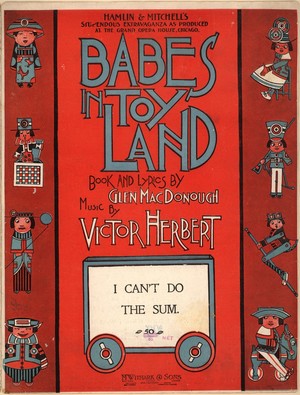
Babes in Toyland is an operetta composed by Victor Herbert with a libretto by Glen MacDonough, which wove together various characters from Mother Goose nursery rhymes into a musical extravaganza. Following the extraordinary success of their stage musical The Wizard of Oz, which was produced in New York beginning in January 1903, producer Fred R. Hamlin and director Julian Mitchell hoped to create more family musicals. MacDonough had helped Mitchell with revisions to the Oz libretto by L. Frank Baum. Mitchell and MacDonough persuaded Victor Herbert to join the production. Babes in Toyland features some of Herbert's most famous songs – among them "Toyland", "March of the Toys", "Go to Sleep, Slumber Deep", and "I Can't Do the Sum". The theme song "Toyland", and the most famous instrumental piece from the operetta, "March of the Toys", occasionally show up on Christmas compilations.
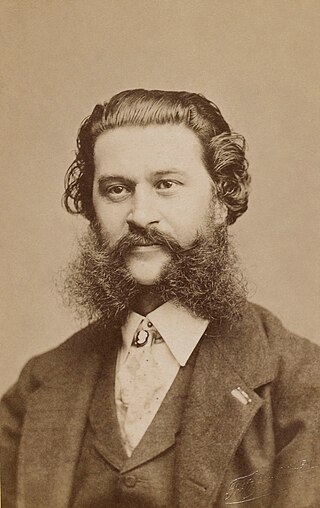
The Gypsy Baron is an operetta in three acts by Johann Strauss II which premiered at the Theater an der Wien on 24 October 1885. Its German libretto by Ignaz Schnitzer is based on the unpublished 1883 story Saffi by Mór Jókai. Jokai later published a novel A cigánybáró in 1885 using an expanded version of this same story.
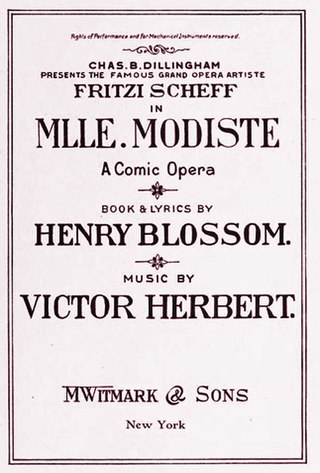
Mlle. Modiste is an operetta in two acts composed by Victor Herbert with a libretto by Henry Blossom. It concerns hat shop girl Fifi, who longs to be an opera singer, but who is such a good hat seller that her employer, Mme. Cecil, discourages her in her ambitions and exploits her commercial talents. Also, Fifi loves Etienne de Bouvray, who returns her love, but his uncle, Count Henri, opposes their union. The operetta features the song "Kiss Me Again".

His Excellency is a two-act comic opera with a libretto by W. S. Gilbert and music by F. Osmond Carr. The piece concerns a practical-joking governor whose pranks threaten to make everyone miserable, until the Prince Regent kindly foils the governor's plans. Towards the end of the Gilbert and Sullivan partnership, Arthur Sullivan declined to write the music for this piece after Gilbert insisted on casting his protege, Nancy McIntosh, in the lead role; Sullivan and producer Richard D'Oyly Carte, proprietor of the Savoy Theatre, did not feel that McIntosh was adequate.
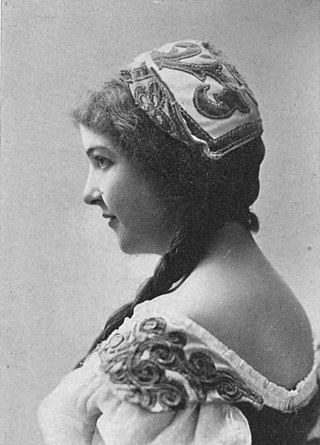
Alice Nielsen was an American Broadway performer and operatic soprano who had her own opera company and starred in several Victor Herbert operettas.
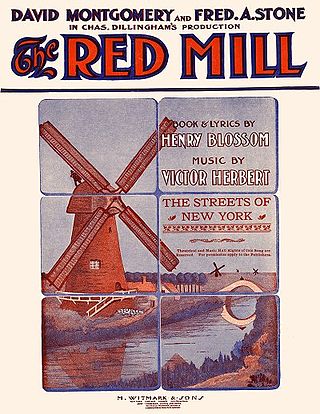
The Red Mill is an operetta written by Victor Herbert, with a libretto by Henry Blossom. The farcical story concerns two American vaudevillians who wreak havoc at an inn in the Netherlands, interfering with two marriages; but all ends well. The musical premiered on Broadway on September 24, 1906, at the Knickerbocker Theatre and ran for 274 performances, starring comedians Fred Stone and David C. Montgomery. It also had a London run and toured extensively, and in 1945 had a long-running Broadway revival. The Red Mill includes the famous songs "Every Day is Lady's Day with Me", "The Streets of New York", "You Never Can Tell About a Woman", and "Because You're You".

The Serenade is an operetta with music and lyrics by Victor Herbert, and book by Harry B. Smith. Produced by a troupe called "The Bostonians", it premiered on Broadway on March 16, 1897 at the Knickerbocker Theatre and ran initially for 79 performances. It remained very popular into the new century, running almost continuously for the next seven years.

Kiss Me Again is a 1931 American pre-Code musical operetta film filmed entirely in Technicolor. It was originally released in the United States as Toast of the Legion late in 1930, but was quickly withdrawn when Warner Bros. realized that the public had grown weary of musicals. The Warner Bros. believed that this attitude would only last for a few months, but, when the public proved obstinate, they reluctantly re-released the film early in 1931 after making a few cuts to the film.

Maytime is a musical with music by Sigmund Romberg and lyrics and book by Rida Johnson Young, and with additional lyrics by Cyrus Wood. The story is based on the 1913 German operetta Wie einst im Mai, composed by Walter Kollo, with words by Rudolf Bernauer and Rudolph Schanzer. The story, set in New York, is told in episodes covering a long period, from 1840 to the 20th century. Wealthy young Ottillie is in love with Dick, but they are kept apart by family and circumstance. Years later, their descendants marry. Maytime introduced songs such as "The Road to Paradise", "Will You Remember?" and "Jump Jim Crow".

The Spanish Dancer is a 1923 American silent costume epic starring Pola Negri as a gypsy fortune teller, Antonio Moreno as a romantic count, and Wallace Beery as the king of Spain. The film was directed by Herbert Brenon and also features a five-year-old Anne Shirley, appearing under the name "Dawn O'Day." The film survives today.

Marguerite Sylva was a Belgian born mezzo-soprano who achieved fame in opera, operetta, and musical theatre. She was particularly known for her performances in the title role of Bizet's Carmen, which she sang over 300 times in the course of her career. Sylva was a pioneering recording artist for Edison Records and made many recordings for the company from 1910 to 1912.

Les Deux Pigeons is a ballet originally choreographed in two acts by Louis Mérante to music by André Messager. The libretto by Mérante and Henri de Régnier is based on the fable The Two Pigeons by Jean de La Fontaine. The work was first performed at the Paris Opéra on 18 October 1886. The premiere cast included Rosita Mauri as Gourouli and Marie Sanlaville as Pépio.

Paul Heidemann was a German actor, comedian, film director, film producer, and opera singer. As a performer, he excelled in various genres and was especially noted for his comedic skills
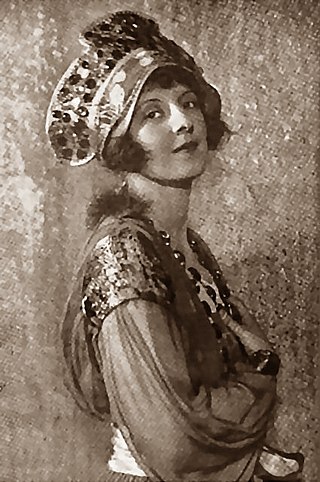
Tessa Kay Kosta was an American actress who starred in Broadway musicals and operettas during the early decades of the twentieth century.

La Marjolaine is an opéra bouffe in three acts, with music by Charles Lecocq and words by Eugène Leterrier and Albert Vanloo, the third collaboration by the three. It opened at the Théâtre de la Renaissance, Paris on 3 February 1877 and had a fairly successful run of 117 performances. The work was staged in continental Europe, Britain and the Americas over the next few years.
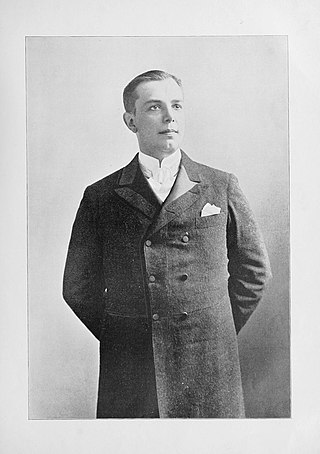
Eugene Cowles was a Canadian operetta singer and actor. He began recording in 1898 and continued through 1921.






















